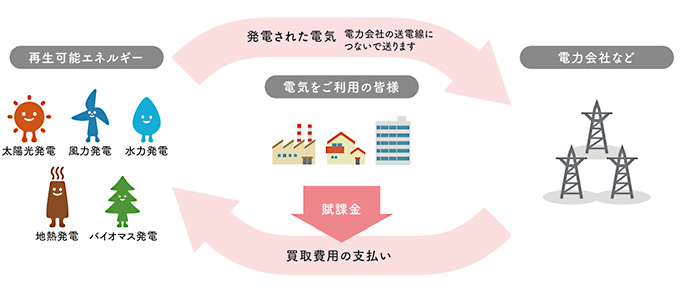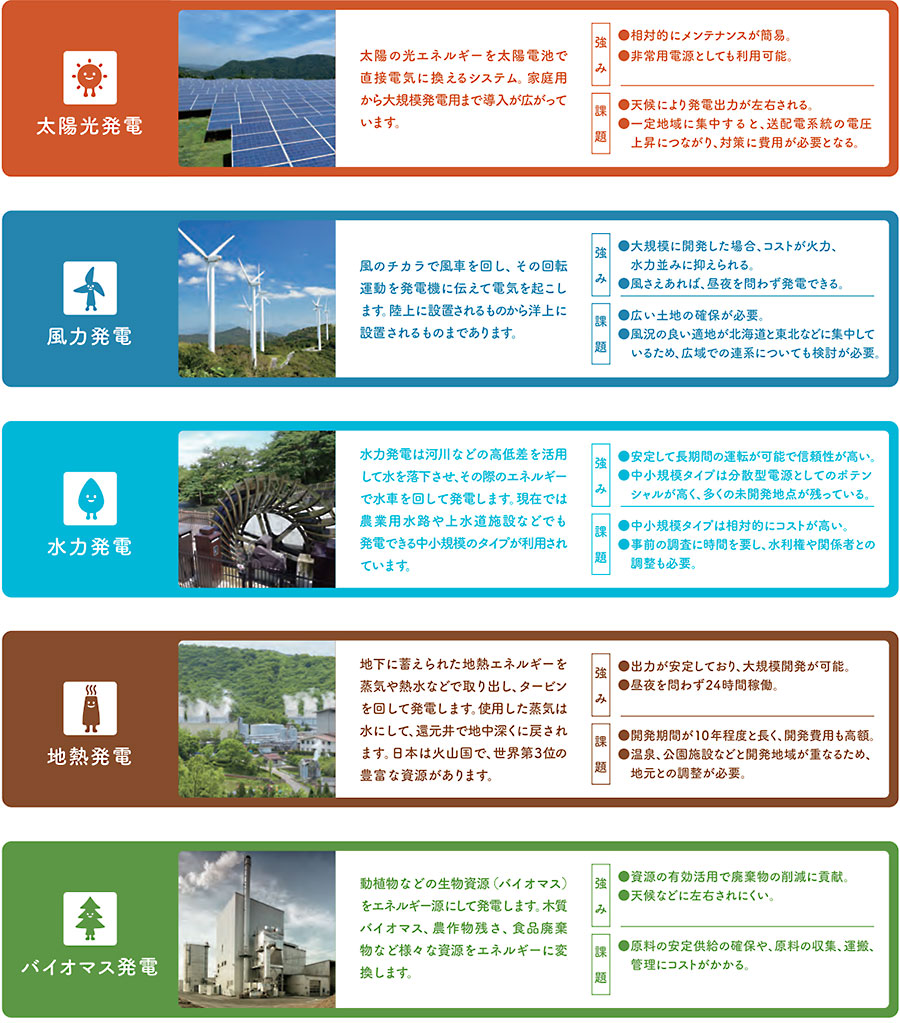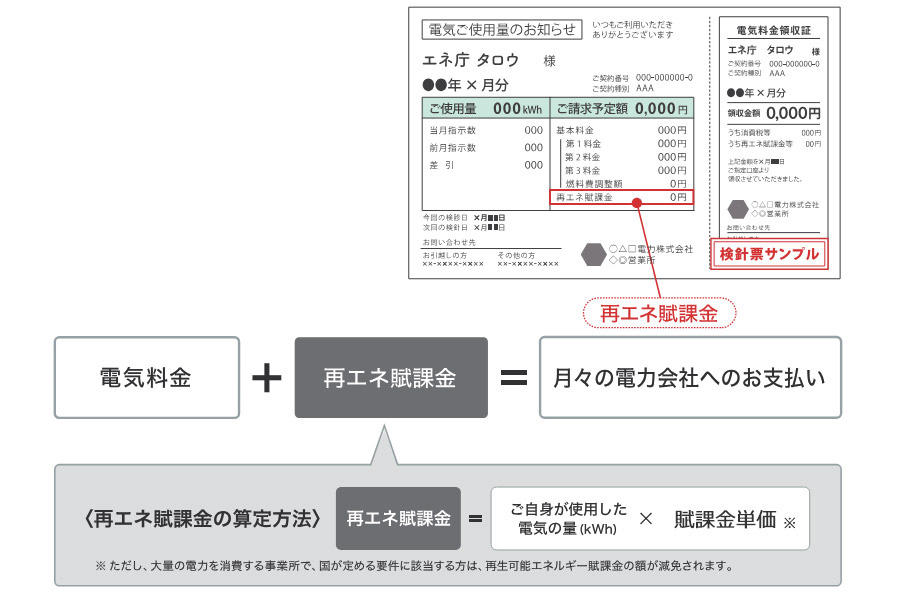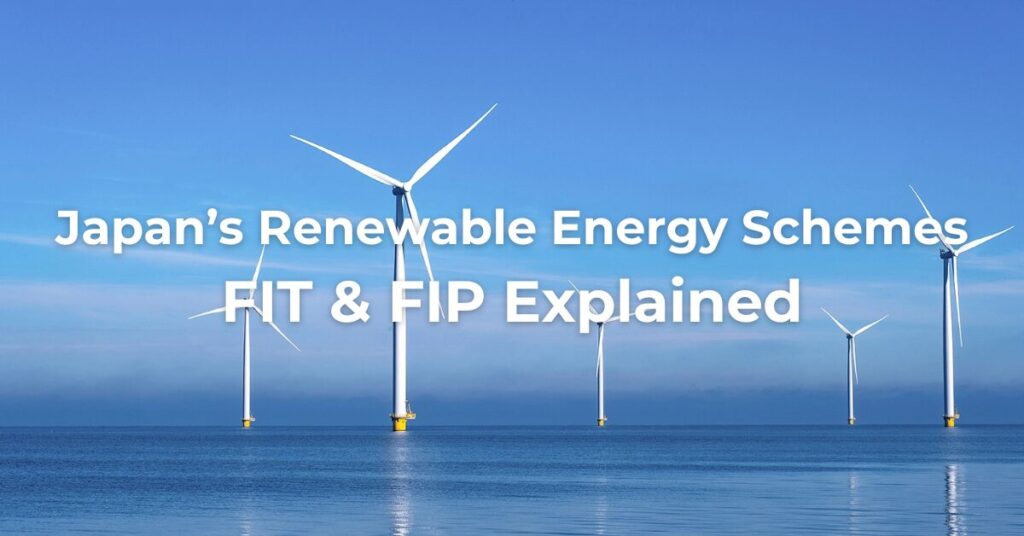Japan promotes the use of renewable energy through two key policy instruments: the Feed-in Tariff (FIT) and the Feed-in Premium (FIP) schemes. The FIT and FIP schemes form a crucial part of the Japan offshore wind policy, providing financial stability and market-based incentives for developers. This article explains the overview, features, and challenges of these schemes.
FIT Scheme: The Foundation of Japan’s Renewable Energy Introduction
The FIT scheme guarantees that electricity generated from renewable sources is purchased by utilities at a fixed price for a certain period. This provides stable revenue for power producers and promotes investment in renewable energy infrastructure.

Source: METI Agency for Natural Resources and Energy website
Applicable Renewable Energy Sources
The FIT covers five types of renewable energy: solar, wind, hydro, geothermal, and biomass. Projects that meet the national requirements and start new power generation are eligible. In principle, all electricity generated is subject to purchase. However, for small-scale solar systems (under 10 kW, such as residential rooftops) and mid-scale systems (10–50 kW, such as rooftops on buildings or factories), only surplus electricity after self-consumption is eligible.

Source: METI Agency for Natural Resources and Energy website
Renewable Energy Surcharge
The cost of purchasing renewable energy under the FIT scheme is funded through a renewable energy surcharge, which is collected from electricity users. This surcharge is included in monthly electricity bills and is proportional to electricity consumption. The surcharge unit price is adjusted to be uniform across the country and is determined annually by the Minister of Economy, Trade and Industry.

Source: METI Agency for Natural Resources and Energy website
FIP Scheme: Market-Linked Incentives
The FIP scheme allows power producers to sell electricity on the market and receive a premium on top of the market price. This encourages producers to align with market trends and optimize revenue.
Key Differences Between FIT and FIP
| Feature | FIT | FIP |
|---|---|---|
| Purchase Price | Fixed rate guaranteed by the government | Market price + premium |
| Imbalance Responsibility | Exempted | Power producers bear responsibility |
| Non-Fossil Value Trading | Not tradable (included in FIT price) | Tradable in the non-fossil certificate market |
Benefits of the FIP Scheme
Under the FIP system, producers can maximize profits by selling power during peak market hours. In addition, facilities that have completed their FIT period can transition to the FIP scheme and continue receiving financial support.
Challenges and Policy Responses
There have been cases of rule violations under these schemes. For example, solar power projects violating the Farmland Act or Forest Act have been temporarily suspended from receiving subsidies by the Agency for Natural Resources and Energy. These measures aim to promote legal compliance and coexistence with local communities, ensuring responsible renewable energy development.
Introduction of Generator-side Levy
To expand renewable energy and maintain transmission infrastructure, Japan introduced a generator-side levy, requiring power producers to share part of the system maintenance costs. This supports efficient grid use and fair cost-sharing. Existing FIT/FIP-certified projects will be subject to the levy after their procurement period ends.
Conclusion
The FIT and FIP schemes are essential drivers of Japan’s renewable energy transition. FIT provides stable revenues and supports early-stage development, while FIP promotes market integration and encourages producer autonomy. With proper compliance and community engagement, these systems are expected to contribute significantly to building a sustainable energy future for Japan.
📚 Want to dive deeper? Explore J-WIND Times’ featured categories!
🔍 Market Trends & Analysis – Stay ahead with insights into the latest developments shaping renewable energy investments.
🏛 Policy & Regulation – From auction schemes to FIP reform, get a clear understanding of Japan’s evolving energy rules.
⚙️ Projects – Discover the progress and behind-the-scenes of offshore wind projects across Japan.
💡 Technology & Innovation – From next-gen turbines to floating foundations, explore the cutting edge of offshore wind tech.



